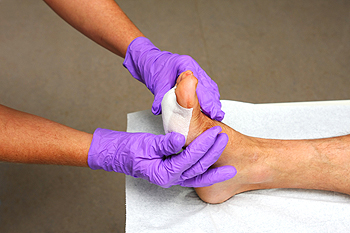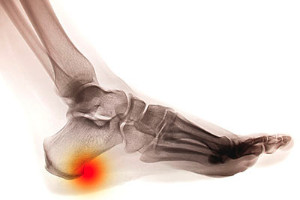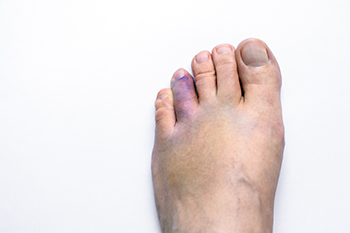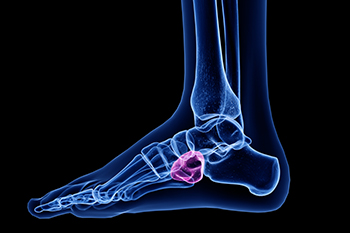December 2023
It's Time for Beautiful Feet
Debridement of Diabetic Foot Wounds

Diabetic foot ulcers can lead to serious problems like amputations, infections, and a lower quality of life. These wounds take a long time to heal and can come back even after they seem better. Podiatrists often use a treatment called debridement to help. Several different debridement methods are employed to address these wounds effectively. Sharp surgical debridement involves the precise use of surgical instruments, such as scalpels, to skillfully remove dead or damaged tissue from the wound. Autolytic debridement harnesses the body's natural healing processes. It involves maintaining a moist wound environment using appropriate dressings. The body's own enzymes work to break down and liquefy dead tissue over time. Enzymatic debridement uses specialized ointments or gels containing enzymes applied to the wound. These enzymes actively break down necrotic tissue, aiding in its removal. Enzymatic debridement products are available by prescription. Other types of debridement exist. If you have a diabetic foot ulcer that needs extra care, it is strongly suggested that you make an appointment with a podiatrist to discuss debridement as a healing treatment and the precise type that would be best for your individual needs.
Wound care is an important part in dealing with diabetes. If you have diabetes and a foot wound or would like more information about wound care for diabetics, consult with one of our podiatrists from Bazzi Podiatry. Our doctors will assess your condition and provide you with quality foot and ankle treatment.
What Is Wound Care?
Wound care is the practice of taking proper care of a wound. This can range from the smallest to the largest of wounds. While everyone can benefit from proper wound care, it is much more important for diabetics. Diabetics often suffer from poor blood circulation which causes wounds to heal much slower than they would in a non-diabetic.
What Is the Importance of Wound Care?
While it may not seem apparent with small ulcers on the foot, for diabetics, any size ulcer can become infected. Diabetics often also suffer from neuropathy, or nerve loss. This means they might not even feel when they have an ulcer on their foot. If the wound becomes severely infected, amputation may be necessary. Therefore, it is of the upmost importance to properly care for any and all foot wounds.
How to Care for Wounds
The best way to care for foot wounds is to prevent them. For diabetics, this means daily inspections of the feet for any signs of abnormalities or ulcers. It is also recommended to see a podiatrist several times a year for a foot inspection. If you do have an ulcer, run the wound under water to clear dirt from the wound; then apply antibiotic ointment to the wound and cover with a bandage. Bandages should be changed daily and keeping pressure off the wound is smart. It is advised to see a podiatrist, who can keep an eye on it.
If you have any questions, please feel free to contact one of our offices located in Detroit, West Detroit, Northwest Detroit, Sterling Heights, Hamtramck, Dearborn Heights, Madison Heights, Redford, and Livonia, MI . We offer the newest diagnostic and treatment technologies for all your foot care needs.
Gentle Exercises That May Help Heel Spurs

Heel spurs are bony outgrowths at the base of the heel bone, and implementing targeted exercises is a proactive approach to managing heel spur pain. Stretching exercises, such as towel curls and toe stretches, help maintain flexibility in the foot's connective tissues, mitigating strain on the heel. Calf stretches, performed against a wall, alleviate tension in the Achilles tendon, and may help to reduce the impact on the heel spur. Rolling a frozen water bottle under the foot not only provides relief but also minimizes inflammation. Incorporating these exercises into a regular routine can contribute to the gradual alleviation of heel spur discomfort. It is imperative to approach these exercises with patience, allowing the body time to adapt and heal. Consultation with a podiatrist is advisable to tailor exercises to individual needs. If you have developed a heel spur, it is suggested that you schedule an appointment with a podiatrist who can effectively diagnose and treat this condition.
Heel spurs can be incredibly painful and sometimes may make you unable to participate in physical activities. To get medical care for your heel spurs, contact one of our podiatrists from Bazzi Podiatry. Our doctors will do everything possible to treat your condition.
Heels Spurs
Heel spurs are formed by calcium deposits on the back of the foot where the heel is. This can also be caused by small fragments of bone breaking off one section of the foot, attaching onto the back of the foot. Heel spurs can also be bone growth on the back of the foot and may grow in the direction of the arch of the foot.
Older individuals usually suffer from heel spurs and pain sometimes intensifies with age. One of the main condition's spurs are related to is plantar fasciitis.
Pain
The pain associated with spurs is often because of weight placed on the feet. When someone is walking, their entire weight is concentrated on the feet. Bone spurs then have the tendency to affect other bones and tissues around the foot. As the pain continues, the feet will become tender and sensitive over time.
Treatments
There are many ways to treat heel spurs. If one is suffering from heel spurs in conjunction with pain, there are several methods for healing. Medication, surgery, and herbal care are some options.
If you have any questions feel free to contact one of our offices located in Detroit, West Detroit, Northwest Detroit, Sterling Heights, Hamtramck, Dearborn Heights, Madison Heights, Redford, and Livonia, MI . We offer the latest in diagnostic and treatment technology to meet your needs.
Broken Toes Can Result in Complications

People can drop a heavy object on their foot, and may wonder if it is a temporary pain or something more serious like a broken toe. Broken toes are often the result of such accidents as having a heavy object drop on the foot, jamming it into a piece of furniture, or from missing a step. They can also occur due to an aggravated stress fracture, abnormal foot structure, or conditions such as osteoporosis. When a toe breaks, it causes severe pain, swelling, and bruising. Walking becomes difficult, but it is important to note that the ability to walk on a broken toe does not rule out a fracture. Diagnosis typically involves a visual examination and may require X-rays to be taken. Treatment options range from rest and elevation for minor fractures to splinting or buddy taping for more severe cases. In rare instances, surgery may be necessary to ensure proper healing. Complications such as toenail trauma, chronic pain, stiffness, and deformity can arise if a broken toe is not treated correctly. If you suspect you have broken your toe, it is suggested that you schedule an appointment with a podiatrist for a timely and effective recovery.
A broken toe can be very painful and lead to complications if not properly fixed. If you have any concerns about your feet, contact one of our podiatrists from Bazzi Podiatry. Our doctors will treat your foot and ankle needs.
What to Know About a Broken Toe
Although most people try to avoid foot trauma such as banging, stubbing, or dropping heavy objects on their feet, the unfortunate fact is that it is a common occurrence. Given the fact that toes are positioned in front of the feet, they typically sustain the brunt of such trauma. When trauma occurs to a toe, the result can be a painful break (fracture).
Symptoms of a Broken Toe
- Throbbing pain
- Swelling
- Bruising on the skin and toenail
- The inability to move the toe
- Toe appears crooked or disfigured
- Tingling or numbness in the toe
Generally, it is best to stay off of the injured toe with the affected foot elevated.
Severe toe fractures may be treated with a splint, cast, and in some cases, minor surgery. Due to its position and the pressure it endures with daily activity, future complications can occur if the big toe is not properly treated.
If you have any questions please feel free to contact one of our offices located in Detroit, West Detroit, Northwest Detroit, Sterling Heights, Hamtramck, Dearborn Heights, Madison Heights, Redford, and Livonia, MI . We offer the newest diagnostic and treatment technologies for all your foot and ankle needs.
A Closer Look at Causes of Cuboid Syndrome

Cuboid syndrome, a relatively lesser known foot ailment, involves the dislocation or subluxation of the cuboid bone, which is one of the seven tarsal bones in the foot. This condition typically occurs when there is excessive stress on the foot, often stemming from activities that involve repeated impact or sudden twisting motions. Participating in high impact sports, wearing improper footwear, or sudden changes in activity levels can contribute to the misalignment of the cuboid bone. The cuboid bone sits on the outer side of the foot, forming a vital connection between the foot and the ankle. When it shifts out of its normal position, it can cause pain and discomfort along the outer edge of the foot, accompanied by swelling and limited range of motion. Recognizing the definition and understanding the causes of cuboid syndrome is essential for prompt diagnosis and appropriate management that can restore normal foot function. If you have pain in this area of your foot, it is suggested that you contact a podiatrist who can accurately diagnose whether it is cuboid syndrome and offer appropriate treatment techniques.
Cuboid syndrome, also known as cuboid subluxation, occurs when the joints and ligaments near the cuboid bone in the foot become torn. If you have cuboid syndrome, consult with one of our podiatrists from Bazzi Podiatry. Our doctors will assess your condition and provide you with quality foot and ankle treatment.
Cuboid syndrome is a common cause of lateral foot pain, which is pain on the outside of the foot. The condition may happen suddenly due to an ankle sprain, or it may develop slowly overtime from repetitive tension through the bone and surrounding structures.
Causes
The most common causes of cuboid syndrome include:
- Injury – The most common cause of this ailment is an ankle sprain.
- Repetitive Strain – Tension placed through the peroneus longus muscle from repetitive activities such as jumping and running may cause excessive traction on the bone causing it to sublux.
- Altered Foot Biomechanics – Most people suffering from cuboid subluxation have flat feet.
Symptoms
A common symptom of cuboid syndrome is pain along the outside of the foot which can be felt in the ankle and toes. This pain may create walking difficulties and may cause those with the condition to walk with a limp.
Diagnosis
Diagnosis of cuboid syndrome is often difficult, and it is often misdiagnosed. X-rays, MRIs and CT scans often fail to properly show the cuboid subluxation. Although there isn’t a specific test used to diagnose cuboid syndrome, your podiatrist will usually check if pain is felt while pressing firmly on the cuboid bone of your foot.
Treatment
Just as the range of causes varies widely, so do treatments. Some more common treatments are ice therapy, rest, exercise, taping, and orthotics.
If you have any questions, please feel free to contact one of our offices located in Detroit, West Detroit, Northwest Detroit, Sterling Heights, Hamtramck, Dearborn Heights, Madison Heights, Redford, and Livonia, MI . We offer the newest diagnostic and treatment technologies for all your foot care needs.






